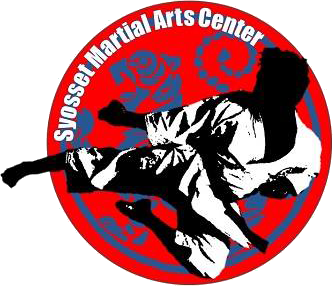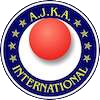The word karate-do is made up of three Japanese characters. Their literal meaning is “Way of the Empty Hands.” Karate is a martial art of empty handed self-defense; whereas it teaches its’ students to use unarmed body parts, such as hands and feet, to ward off attackers.
Karate is made up of four aspects.
1) Character Builder
2) Self-Defense
3) Physical Exercise
4) World Wide Sport
“The world of karate cannot be compared to any other sport or physical exercise. Karate developing the whole body and mind can be experienced by anyone. Since karate offers self-defense, character development, physical exercise, a historical art and a sport, anyone of any age and any ethnic group can train in the way of karate.”
“True karate is this: that in daily life one’s mind and body be trained and developed in a spirit of humility, and that in critical times, one be devoted utterly to the cause of justice.”
– Master Gichin Funakoshi
SHOTOKAN HISTORY
Gichin Funakoshi (Found of Shotokan)
Master Gichin Funakoshi is widely considered the primary “father” of modern day karate due to his efforts to introduce the Okinawan art to mainland Japan, from where it spread to the rest of the world.
Born in 1868, he began to study karate at the age of 11, and was a student of the two greatest masters of the time, Azato and Itosu. He grew so proficient that he was initiated into all the major styles of karate in Okinawa at the time. For Master Funakoshi, the word karate eventually took on a deeper and broader meaning through the synthesis of these many methods, becoming karate-do, literally the “way of karate,” or of the empty hand. Training in karate-do became an education for life itself. Master Funakoshi was the first expert to introduce karate-do to mainland Japan. In 1916 he gave a demonstration at the Butokuden in Kyoto, Japan, which at that time was the official center of all martial arts.
On March 6, 1921, the Crown Prince, who was later to become the Emperor of Japan, visited Okinawa and Master Funakoshi was asked to demonstrate karate for him. In the early spring of 1922 Master Funakoshi traveled to Tokyo to present his art at the First National Athletic Exhibition in Tokyo organized by the Ministry of Education. He was strongly urged by several eminent groups and individuals to remain in Japan, and indeed he never did return to Okinawa. Master Funakoshi taught only one method, a total discipline, which represented a synthesis of Okinawan karate styles. This method became known as Shotokan, literally meaning the clan or the house of Shoto, which was the Master’s pen name for his poetry, denoting the sound of the wind blowing through pines.
In 1949 the Japan Karate Association was founded with Master Funakoshi as the chief instructor and the late head of the JKA Masatoshi Nakayama on the committee as principal active instructor. Master Funakoshi died in 1957 at 89 years of age.
The American JKA of New York, SMAC Dojo encourages competition in sport Karate for the students, especially our youngsters.
“In healthy competition, confidence develops”
Our philosophy is based on the core principles of “character, sincerity, dedication, etiquette and self control” – making Shotokan Karate an especially good martial-art for children and families as well as individual adults.
Please contact us or come down and train. Everyone is welcome.
Yours in Shotokan
– Avi Azoulay, Chief Instructor
DOJO KUN
Seek Perfection of Character
Hitotsu! Jinkaku kensei ni tsutomuru koto!
Be faithful
Hitotsu! Makoto no michi o mamoru koto!
Endevour
Hitotsu! Doryoku no seishin o yashinau koto!
Respect others
Hitotsu! Reigo o omonzuru koto!
Refrain from violent behavior
Hitotsu! Kekkino yu o imashimuru koto!
Shorin & Shorei
Shotokan Karate is comprised of 26 core kata, categorized into 2 types ‘Shorin’ and‘Shorei’.
Shorin kata movements are performed with the mind and bodyset of being flexible, soft and slow, with quick sharp movements.
Shorei kata movements are performed with the mind and bodyset of being strong, solid, with solid movements, strong-hard foundation.
Listed below are all 26 katas divided into their specific category:
Shorin
| Kata Name | # of Moves | Kiai at Move # | Kata Meaning |
|---|---|---|---|
| Heian Shodan | 21 | 9, 17 | “Peaceful Mind” |
| Heian Nidan | 26 | 11, 26 | “Peaceful Mind” |
| Heian Sandan | 20 | 10, 20 | “Peaceful Mind” |
| Heian Yondan | 27 | 13, 25 | “Peaceful Mind” |
| Heian Godan | 23 | 12, 19 | “Peaceful Mind” |
| Bassai Dai | 42 | 19, 42 | “Penetrating the Fortress – Big” |
| Kanku Dai | 65 | 15, 65 | “Look to the Sky – Big” |
| Empi | 37 | 16,36 | “Flying Swallow” |
| Gankaku | 42 | 28, 42 | “Crane on a Rock” |
| Bassai Sho | 27 | 17, 22 | “Penetrating the Fortress – Small” |
| Kanku Sho | 48 | 6, 48 | “Look to the Sky – Small” |
| Unsu | 48 | 36, 48 | “Parting the Clouds” |
| Nijushiho | 24 | 18, 23 | “Twenty-four Steps” |
| Wankan | 24 | 24 | “Kings and Crown” |
| Chinte | 32 | 28, 32 | “Rare Hands” |
| Gojushiho Dai | 67 | 59, 66 | “Fifty-four Steps – Big” |
| Gojushiho Sho | 65 | 57, 64 | “Fifty-four Steps – Small” |
| Kata Name | # of Moves | Kiai at Move # | Kata Meaning |
|---|---|---|---|
| Tekki Shodan | 23 | 12, 19 | “Iron Horse Stand” |
| Tekki Nidan | 24 | 16, 24 | “Iron Horse Stand” |
| Tekki Sandan | 36 | 16, 36 | “Iron Horse Stand” |
| Ji’on | 47 | 17, 47 | “Love and Goodness” |
| Jitte | 24 | 13, 24 | “Ten Hands” |
| Hangetsu | 41 | 11,40 | “Half Moon” |
| Sochin | 41 | 30, 41 | “Strength and Calm” |
| Meikyo | 33 | 32 | “Bright Mirror” |
| Ji’in | 38 | 11,35 | “Love and Shadow” |


